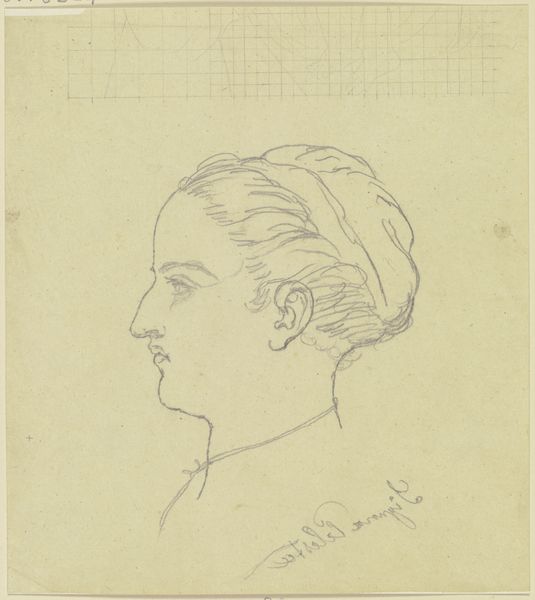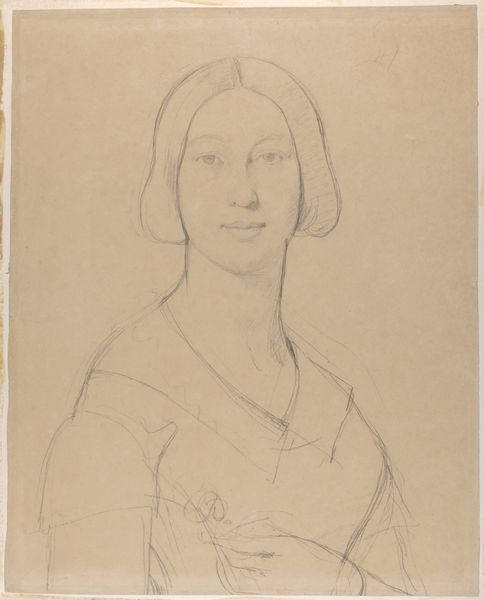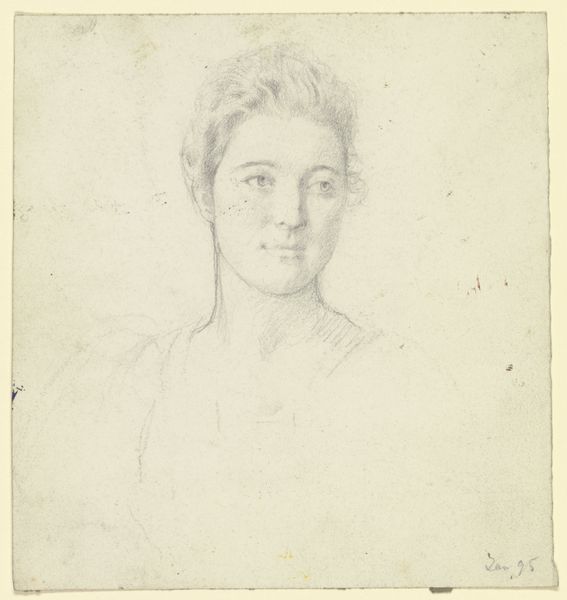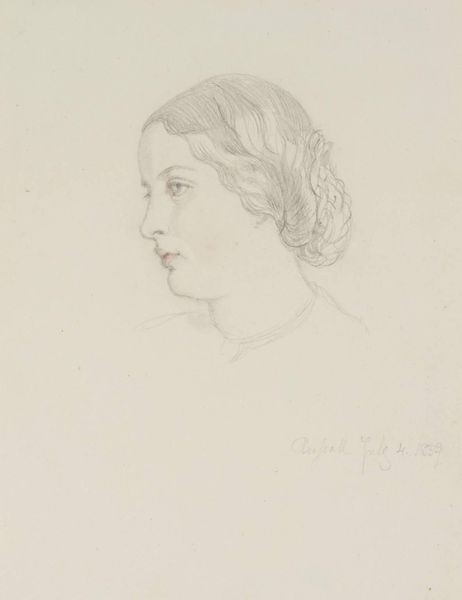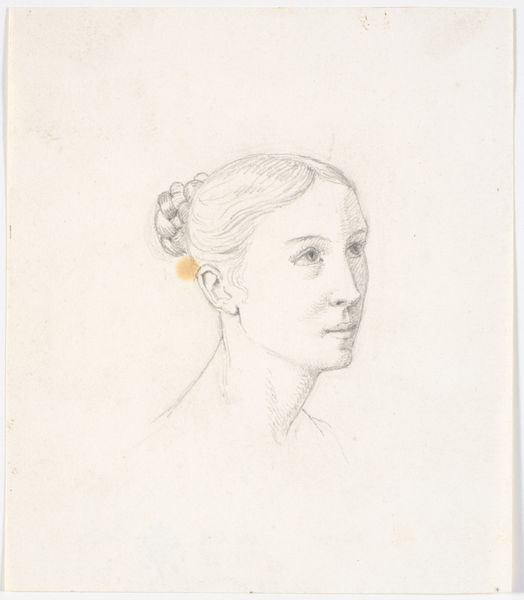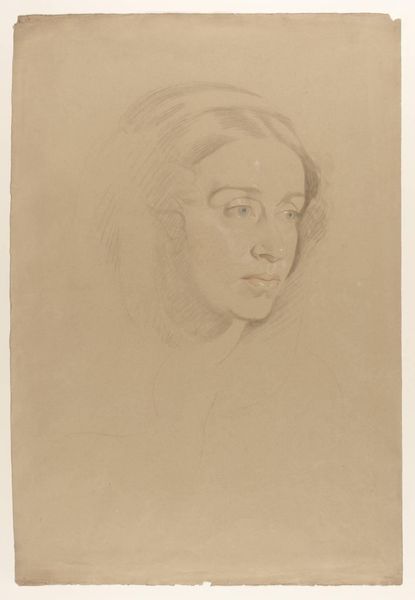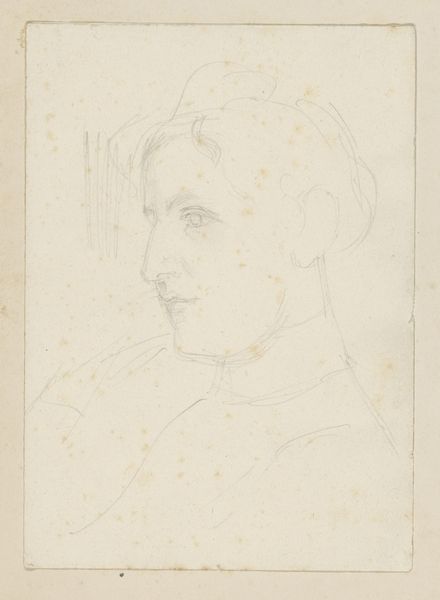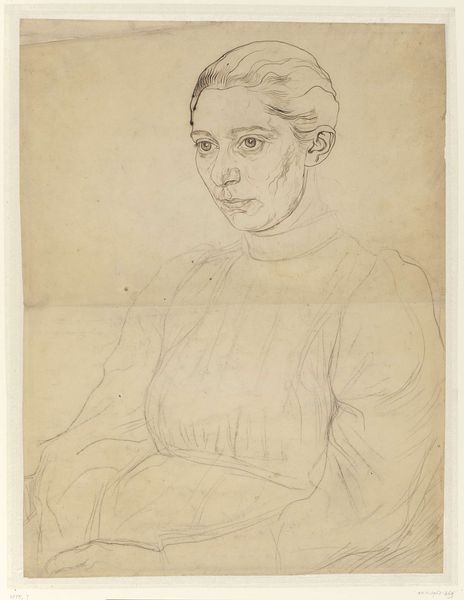
drawing, paper, pencil
#
portrait
#
drawing
#
figuration
#
paper
#
pencil drawing
#
pencil
#
portrait drawing
Copyright: Public Domain
Curator: We're looking at "Bust of a Young Girl, Looking to the Left" housed here at the Städel Museum. It’s a drawing, employing pencil on paper. What’s your initial reaction? Editor: Serene. It feels…almost fragile. The light pencil work gives it an ephemeral quality. What is striking for you? Curator: The materials used point to accessibility. Pencil and paper—the bare essentials for mark-making and art production accessible across time and culture. Was this sketch preparatory to other projects or did this study had other intent, is one the things that I find more intriguing. Editor: The drape of the clothing and the soft treatment of her hair call to mind classical depictions of innocence. The girl’s slightly averted gaze hints at inner contemplation, echoing themes of youthful purity often associated with that time period. The clothing appears somewhat like Roman toga or dress? Curator: Indeed. The association with Roman-era attire invites questions about how the artist interprets ideals and communicates these within society at that time through her art and design decisions. Is she idealized to elevate her stature? Does it have anything to do with social messages communicated through portraiture from powerful people to general society? Editor: It also strikes me that there’s no definite period context; that almost classical styling keeps it somewhat timeless, elevating the emotional impact on viewers from different centuries, who keep trying to guess from what specific historic moment the young girl belonged to, don't you think? Curator: Yes, indeed. With her expression suspended in time, and no way to really confirm when she lived and died and under which historic social constructs, that almost archetypal nature definitely grants her relevance throughout history. Editor: Overall, the visual language and the materials serve a kind of conversation through art; from maker to consumer. Very compelling. Curator: For sure, thinking through accessible media allows this intimacy, enabling artistic traditions of mark making in society.
Comments
No comments
Be the first to comment and join the conversation on the ultimate creative platform.

